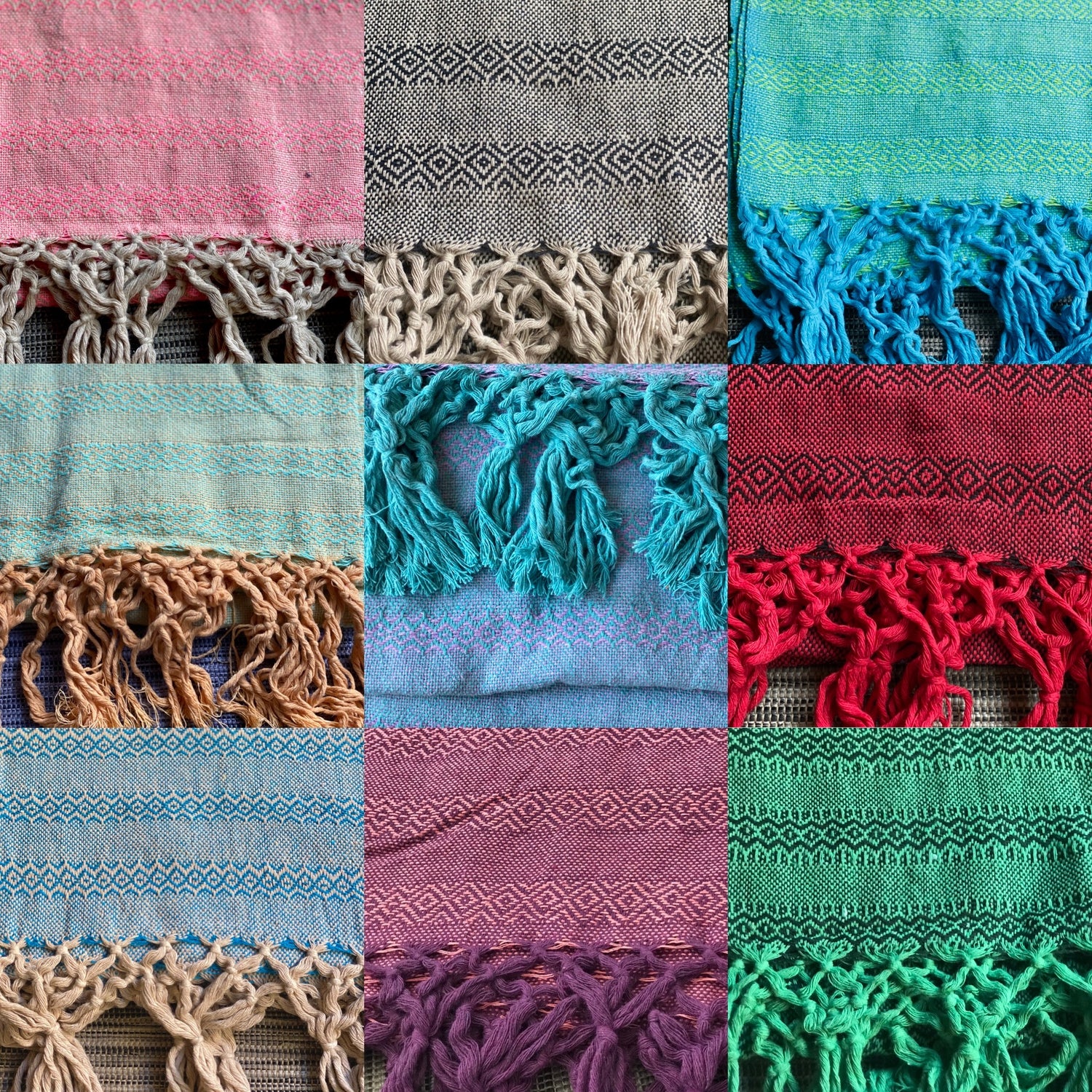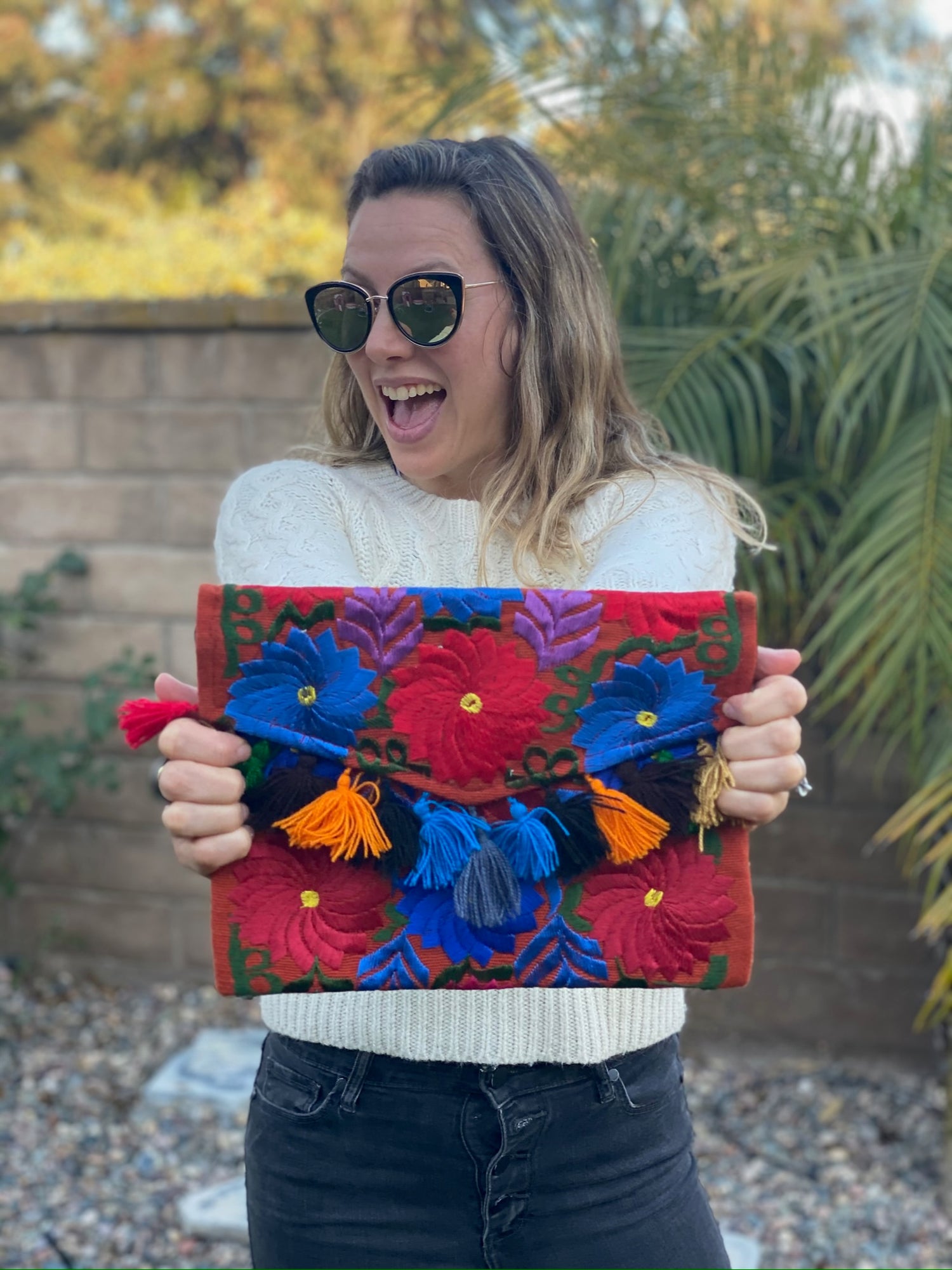Rebozos are more than just beautiful garments; they are a vibrant representation of Mexican culture and identity.
The patterns on a rebozo tell a story about the wearer’s heritage, personal style, and social status.
Each design is carefully crafted, often reflecting the traditions of the region where it was made, creating a strong connection between the fabric and its owner.

Wearing a rebozo can evoke a sense of pride and belonging.
The intricate techniques used to create these textiles reveal not only the skill of the artisans but also the history behind these beloved pieces.
As you explore the different patterns, you will discover how they can express various aspects of your personality and experiences.
Understanding rebozo patterns allows you to appreciate the deeper meaning behind this traditional garment.
You'll see how cultural significance combines with artistry, creating a unique statement piece that connects the past with the present.
Key Takeaways
- Rebozo patterns reflect the wearer’s heritage and individuality.
- The craftsmanship and materials reveal the owner’s cultural background.
- Each rebozo tells a story through its design and techniques.
Historical and Cultural Significance of Rebozos

Rebozos are woven with deep historical roots and cultural value. They represent traditions passed down through generations and showcase the artistic expression of various communities.
This section explores the origins, their role in fashion, and their symbolism within Mexican society.
Origins and Evolution
The history of rebozos can be traced back to pre-Hispanic Mesoamerica. Originally created by Indigenous women, these shawls served practical purposes, such as protection from the elements. The materials used varied, including cotton and agave fibers.
During the colonial period, rebozos gained more intricate designs influenced by both Indigenous and Spanish styles. This blending created unique patterns reflective of Mexican heritage.
Over time, they evolved to symbolize femininity and modesty, illustrating the important role of women in preserving culture.
As Mexico approached independence, rebozos became symbols of national pride, especially during events like Mexican Independence Day.
Rebozos in Fashion and Media
Rebozos have made significant impacts in the world of fashion and media. Designers today draw inspiration from traditional patterns while infusing contemporary styles.
Iconic figures like Frida Kahlo and María Félix showcased them in various artistic forms, enhancing their status.
In Mexican cinema, rebozos feature prominently, often worn by characters representing traditional values. Lila Downs, a renowned artist, incorporates them into her performances, reflecting cultural roots.
Fashion designers are now creating collections that celebrate and revitalize these traditional textiles, connecting modern wearers with their rich history.
This blend of legacy and innovation demonstrates how rebozos remain relevant in contemporary society.
Symbolism and Social Significance
Rebozos carry profound symbolism in Mexican culture. They represent the social status of the wearer and often mark important life events, such as weddings and childbirth.
The colors and patterns can signify one’s heritage, with each design unfolding a story.
For Indigenous communities, rebozos are a reminder of the past and a connection to cultural identity. They reflect the realities of social struggles and resilience, particularly during the Mexican Revolution, where women known as Adelitas used them to invoke strength and unity.
In religious situations, rebozos are used during ceremonies, highlighting their sacredness.
As you wear a rebozo, you carry a piece of history that speaks to your connection to the rich tapestry of Mexican culture and identity.
Materials and Techniques

The materials and techniques used in crafting rebozos are essential to understanding their beauty and significance. These elements not only reflect the skill of the weavers but also the cultural heritage and regional characteristics of the regions they come from.
Traditional Weaving and Dyeing Methods
Rebozos are traditionally handwoven using a backstrap loom. This method allows weavers to create intricate patterns and designs. The loom is portable and uses the weaver's body tension to maintain fabric tightness.
Natural dyes are important in this craft. Indigo is derived from plants, while cochineal, made from insects, gives rich reds. Other dyes come from various minerals and plants.
These dyes create vibrant colors that can represent different meanings or regions, like those found in Oaxaca or Chiapas.
Many weavers use techniques such as the ikat technique, where the yarn is dyed before weaving to form unique patterns. This requires skill and careful planning to achieve desired designs.
Each rebozo created tells a story through its colors and patterns.
Variations by Region and Material
The region greatly influences the materials and styles of rebozos. For instance, rebozos from Tenancingo might use cotton or silk, while areas like Santa María de Río may prefer wool.
You will find unique features in the styles depending on the region. In La Piedad, you might see more intricate designs, compared to simpler patterns in Guanajuato. Each area's designs often reflect local traditions.
Materials also change. Some weavers incorporate rayon for softness, or use locally sourced natural fibers. The rapacejos (fringes) can also vary by region.
These details further personalize each piece, making every rebozo unique to its wearer and origin.
Frequently Asked Questions

Rebozo patterns carry deep meanings tied to the cultural identity of the wearer. The designs, colors, and methods of wearing a rebozo can reveal much about personal heritage and significance in various life stages.
How do the patterns on a rebozo reflect the cultural heritage of the wearer?
The patterns on a rebozo often represent specific regions or communities in Mexico. Each design can signify the traditions, stories, and values of the wearer's heritage, connecting them to their roots and ancestry.
What do the colors and designs on a Mexican rebozo traditionally symbolize?
Colors chosen for a rebozo can have particular meanings. For example, red may symbolize love and passion, while blue can represent tranquility. The designs—such as floral or geometric shapes—can indicate celebration, mourning, or daily life.
Can the way a rebozo is worn reveal anything about the individual's social or marital status?
Yes, the way you wear your rebozo can express social and marital status. Specific styles or methods of draping may indicate whether you are single, married, or in mourning, sharing a personal story without spoken words.
What are the traditional techniques used to create patterns on a rebozo?
Traditional techniques often include handweaving and dyeing methods such as ikat. These methods require skill and artistry, with artisans creating intricate designs that have been passed down through generations.
How is the rebozo incorporated into pregnancy and labor rituals?
During pregnancy and labor, a rebozo serves as a tool for comfort and support. Many cultures use it to help ease pain and promote a sense of security during childbirth, emphasizing its role in maternal health.
In what ways does the rebozo retain its relevance in contemporary fashion?
Today, the rebozo is embraced in modern fashion, often worn as a stylish accessory.
Designers incorporate traditional patterns into contemporary clothing, celebrating cultural heritage while meeting current trends, making it beloved by many.




